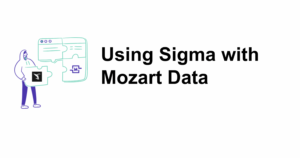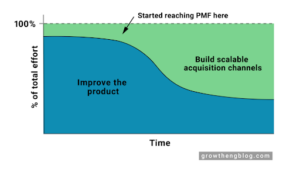TL;DR:
- B2B SaaS companies need a customized data strategy to operate as a data-driven organization.
- The data strategy should define what data needs to be collected, how it will be stored, managed, and used, and who will have access.
- The data collected should be impactful and necessary for making data-driven decisions.
- A modern data platform like Mozart can help store, access, and share data across business units.
- Building a modern data platform internally requires a heavy time commitment; alternatively, Mozart’s all-in-one solution can be implemented quickly and without a high level of technical expertise.
To truly operate as a data-driven organization, B2B SaaS companies need a data strategy that is followed across business units. Broadly speaking, this framework will define what data needs to be collected; how it will be stored, managed, and used; and who will have access and in what ways. Implementing a data strategy and its supporting tools will enable the organization to move nimbly as data collection scales and business needs change over time.
In this article, we’ll contextualize this information and provide examples to help you better understand the need for a customized data strategy and how to build one into your B2B SaaS business model.
What data needs to be collected?
It’s tempting to collect as much information as possible for the off chance that you’ll need a data point down the road. While that seems like the logical approach, storage and computing costs, as well as the organizational challenges of sorting through everything, should have you rethinking that path.

So, what is most important for SaaS data analytics? There is no one correct answer; it will vary by company. What’s right for your organization will depend on your growth strategy and the questions that various business units need answered daily, weekly, monthly, quarterly, and annually to make data-driven decisions.
Let’s use product marketing for SaaS startups as an example. The team wants to outline characteristics of their power users to make adjustments to the product onboarding experience, to onboard new users more effectively and increase their likelihood of becoming power users. The business question here is, “What are the characteristics of our power users?” Now, we must consider what data points need to be collected to properly and completely answer this question.
These are a few metrics that may help the marketing team define a power user:
Frequency of use: How often does the person utilize the product?
Duration of use: How long does each user session last?
Engagement level: What do we know about how engaged the user is? Do they respond to surveys or leave reviews?
Purchase history: What level of subscription are they on? Have they purchased any upsells?
Referral rate: Does the user participate in a referral program? How often do they refer others?
The goal is to identify the metrics that can help point towards the profile (or profiles) of users who are delighted, spend money with your SaaS company, don’t require too many resources to acquire or maintain, and are willing to stay with the tool. Depending on how old your SaaS company is, it may be more or less difficult to trust indicators for potential customer lifetime value (CLTV or LTV), but these are the basic principles.
Once we’ve established the metrics and used internal data to define a power user, we need to understand their behaviors to make the onboarding content impactful:
Usage patterns: How do power users interact with the product?
Feature usage: Which features do power users use most often?
Platform preference: What is their app versus web usage?
Finally, you can look at the demographics of power users to segment tactics by location, industry, company size, and job title, for example.
This is just one component of a SaaS marketing strategy, and notice the breadth and depth of data that needs to be collected. But these user details aren’t just valuable to the marketing team — they can also be utilized in other business units’ analyses, such as product development. For this reason, it’s important that the data being collected is stored in a central repository (like a data warehouse) that can be queried by anyone in the organization who may need access.
How will the data be stored, accessed, and shared?
Storage and access rights are the next two elements to consider in a data strategy. Each source platform, such as Mailchimp, Salesforce, and Stripe, stores the data points it collects and may also provide native tools to run reports and make charts with that data. But viewing that information in isolation won’t allow you to see the bigger business picture. This is where a modern data platform, like Mozart, fits into a data strategy for SaaS companies.
A modern data platform uses data connectors to plug into your tech stack and retrieve the data your business needs. Through automated ETL (extraction, data transformation, and load), the platform cleans the data and sends it to a data warehouse, where the information is organized and stored. The data warehouse serves as the business’ single source of truth for all accurate, up-to-date data. It can be queried by anyone who is given access, so that they may send the data they need downstream, such as in spreadsheets or business intelligence tools, for other teammates to regularly review KPIs, perform analyses, or create visualizations. This is the basis for a self-serve data culture.
Bringing your customized data strategy to life
Once you create your data strategy and get buy-in, the next step is to set up a modern data platform. The core components are ETL (extract, transform, load), a data warehouse, and a data transformation layer that enables you to query the warehouse easily. Building a modern data platform internally requires a heavy time commitment from engineering resources. Alternatively, you can use something like Mozart’s all-in-one solution, which can be implemented quickly and without a high level of technical expertise. Additionally, you’ll be able to take advantage of data platform services, like data reliability, data observability, and data cataloging, that keep your data pipeline healthy and make it easy to scale as your business grows. See how easy it is to bring your customized data strategy to life using Mozart’s modern data platform by scheduling a demo.


